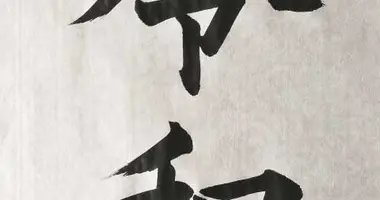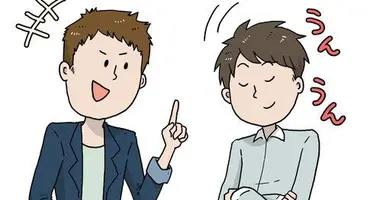15 ways to say “you” and “you” in Japanese
Engage in conversation without misunderstanding
As they say, the first impression goes a long way! Proper salutation, different degrees of politeness... in Japanese, things get slightly more complicated since there is no strictly defined form for addressing others. Here are a few you can use in confidence!
In Japanese, the formulas for addressing someone vary according to the status of the person, the relationship we have with him, or even the region in which we are. Engaging in conversation without making a mistake can quickly become a real headache. To avoid any misunderstanding, Japan Experience presents 15 ways to speak directly to a person in Japanese.
Common pronouns
Like any pronoun, these expressions are used to replace the name of the person. This is why it will be necessary to remain cautious about their use so as not to offend anyone.
1. The very popular "anata" (あなた)
It is the most used pronoun in Japanese! Originally, it was used in common parlance to address a person of the same rank or higher status, such as a manager, a stranger on the street, or even someone you do not know personally; like the wife of a friend for example.
In practice, however, it is mainly used to address an interlocutor whose name we do not know. Because, although it seems very practical, "anata" remains a controversial expression. Also meaning "Honey", it is then often used by women within the couple.
Of course, everything is a matter of context, and the distinction between the two meanings can be made very clear. But in general, this pronoun remains to be avoided. Especially if you are a woman! It could be quite embarrassing during a business dinner to see your boss and your other half turn around at the same time when you say the magic word.
2. The romantic "kimi " (君)
Originally used in common parlance to speak to someone of lower status, regardless of gender, this expression is now mainly used by men who address a woman they know personally. It is then used as well to speak to a close friend, as to a girlfriend or a wife.
3. The overly friendly "omae " (おまえ)
If it could be used in everyday language by a man to address another man of lower status this pronoun is only used in everyday language by young men to designate their close friends like a brother.
4. The controversial "anta" (あんた)
This expression is used in colloquial language to address a person of lower status than his. Attention, however, since its meaning varies according to the regions!
In Kanto (eastern part of the island of Honshu which includes cities such as Tokyo or Yokohama), "anta" allows a hierarchical subordinate to be addressed rudely and disrespectfully, while in Kansai (western Honshu such as Osaka, Kyoto, Nara…), it is used to speak in a friendly way to a person of the same rank or of lower rank to oneself. Use with caution, therefore!
5. Regional "jibun" (じぶん)
This expression is used in the Kansai region to speak both of oneself and one's direct interlocutor in everyday language.
Read: Grammatical particles in Japanese
Hierarchical designations
These expressions are widely used daily, and particularly in the professional world since they refer directly to the hierarchical position of the person. Although they are found in the context of work, where they vary according to the profession and the ranks within the company, they can also be found in the field of service provision or at school. odd here, since these expressions belong to the current language as well as to sustained language. Here are some examples:
- Within a company
6. O kyakusama (お客さま)
Derived from the name "okyaku" designating the customer, to which the suffix "sama" was added to mark a higher degree of politeness, this expression is used by traders to address their customers.
7. Tencho (店長)
This appellation is made up of the store kanji "mise" (店) and the adjective "nagai" (長い) meaning "long". It thus designates the boss of a store and is used as much by employees as by customers.
8. Kacho (課長)
Based on the sectional kanji "ka" (課), this expression denotes a manager. It is therefore used by his subordinates within a company.
9. Bucho (部長)
Derived from the kanji of the "bu" part (部), this designation is used within a company by the subordinates of a department head to address him.
10. Shacho (社長)
We use this expression to speak to the president of the company. It comes from one of the company's kanji " kaisha" (会社).
Note, however, that these designations are only valid within your own company. To address a member of another company, we will then take the appropriate name by adding the suffix "san" (さん). We will thus address, for example, the manager of another company by using " kachô-san" (課長さん).
Read also: 10 ways to say "I" in Japanese
- At school
11. Sensei(先生)
This expression is used by students to designate their teacher, whether the latter is a man or a woman.
12. Senpai(先輩)
This appellation is used by a pupil to address a pupil in a class higher than his own. Again, the expression is independent of gender.
Suffixes
As a whole host of parameters must be taken into account to use pronouns and previous names correctly, the Japanese usually prefer to address their interlocutor by using suffixes behind the name of the latter.
Although we will always prefer to call a superior by his rank in the professional context, these suffixes are then used in all situations of daily life.
13. Name + san (さん)
" San" is the most used of all the suffixes since it allows you to address a stranger as well as a person of the same rank or lower rank than you, whatever their gender. For example, if the surname of the person you are talking to is Suzuki, all you need to do is address them as "Suzuki-san ".
14. Name + kun (くん)
This suffix is usually used to address a little boy, although it is also used by some teachers to address their students, whether in middle school or high school.
15. Name + chan (ちゃん)
This suffix is added to the name of a little girl to address her.
See: Japanese suffixes















